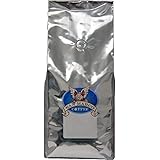There’s a familiar scenario for many home baristas and coffee professionals alike. You’ve pulled a perfect espresso shot. The crema is rich, the aroma captivating. Then, you steam your milk. Sometimes it’s glossy, integrated, and flows like silk. Other times, it’s a bubbly mess or thin and watery. This inconsistency directly impacts your latte art and, more importantly, the drink’s overall quality.
Achieving truly perfect steamed milk for latte art is a foundational skill. It transforms a good espresso into an exceptional beverage. The video above provides a concise visual guide to key techniques. Let’s delve deeper into these crucial steps. Understanding the ‘why’ behind each action elevates your craft. Mastering milk texturing moves you beyond basic frothing. It’s about creating homogenous microfoam.
Mastering Perfect Steamed Milk for Latte Art: Beyond the Basics
The journey to excellent latte art begins long before the pour. It starts with meticulous milk preparation. This involves precise technique and keen observation. Consistent, high-quality microfoam is non-negotiable. It integrates flawlessly with espresso. This creates that desirable velvety mouthfeel. It also holds delicate latte art patterns. Every detail matters in this process.
The Art of Steam Wand Positioning and Aeration
Proper steam wand positioning is paramount. It dictates the entire steaming process. First, always purge the steam wand. This removes any residual water. It ensures only dry, hot steam enters your milk. This improves steam quality significantly. It also prevents contamination.
Initial Air Integration: The “Stretching” Phase
Begin by placing the steam wand in the middle of the pitcher. The tip should sit just below the milk’s surface. A slight angle is often optimal. This creates surface agitation. The goal here is controlled air integration. You are ‘stretching’ the milk. It needs to expand slightly. This adds volume. It also begins microfoam creation. Listen for a gentle, paper-tearing sound. This indicates proper aeration. Avoid harsh, spitting noises; these introduce large, undesirable bubbles.
The Vortex Effect: Integrating Microfoam
After initial stretching, submerge the wand slightly deeper. Choose a side of rotation, right or left. Slightly move the pitcher’s base to achieve this. This creates a powerful vortex. This vortex effect is crucial for microfoam formation. It swirls the milk vigorously. This movement incorporates air bubbles evenly. It breaks down larger bubbles. Smaller, finer bubbles are integrated. This results in a homogenous texture. The milk becomes velvety. It gains a characteristic sheen. Maintaining this strong swirl is key. It continues until the desired temperature is reached.
Finally, clean the steam wand immediately after use. Purge it again. This prevents milk residue from hardening. Dried milk can block the steam jets. It also harbors bacteria. Hygiene is as important as technique.
Precision Temperature Control for Optimal Milk Texturing
Temperature plays a critical role. It affects both taste and texture. The video suggests a target range of 130-149°F (55-65°C). This is generally ideal. A maximum temperature of 70°C (158°F) must be observed. Exceeding this burns the milk. Burnt milk develops an unpleasant sulfurous taste. It also loses its natural sweetness. High heat denatures milk proteins excessively. This impacts texture negatively. It makes pouring latte art very challenging.
The Science Behind Milk Temperature
At temperatures between 55-65°C, milk undergoes specific changes. Lactose, the milk sugar, caramelizes slightly. This enhances sweetness. Milk proteins begin to denature. This creates a stable network. This network traps air bubbles. It forms the desired microfoam structure. Below this range, the milk is often too thin. It lacks sweetness. Above 70°C, protein denaturation becomes destructive. The milk can taste sour. It also develops an ‘off’ flavor. The texture often becomes curdled or overly stiff. This prevents smooth pouring. A thermometer is a valuable tool. It ensures accuracy. Alternatively, learning to gauge temperature by touch is an advanced skill. The pitcher becomes too hot to comfortably hold.
The Crucial Role of Tapping and Swirling
Even with perfect steaming, some large air bubbles can remain. These are detrimental to latte art. Tapping the pitcher removes these. Gently tap the base of the pitcher on the counter. This action releases trapped air. Next, swirl the milk constantly. This keeps the milk homogenous. The microfoam tends to separate from the milk. This is often called ‘creaming off’. It forms a distinct layer. This separation is bad for latte art. It leads to a watery pour. The art becomes difficult to execute. The milk should be smooth. It needs a distinct sheen. This resembles wet paint. This visual cue indicates ideal consistency. Continuous swirling until the very moment of pouring is non-negotiable. It maintains emulsification. It keeps the microfoam integrated throughout the milk.
Optimizing Speed and Workflow: The Pouring Imperative
Timing is everything in coffee preparation. Waiting too long between frothing and pouring is a common mistake. This delay can significantly impact your latte art. Milk degrades quickly after steaming. Oxidation occurs. The texture can stiffen. The microfoam separates. This makes it challenging to achieve smooth, free-pour designs.
Try timing your espresso shot with your milk steaming. This ensures both components are ready simultaneously. This workflow efficiency is vital. Pouring quickly after finishing steaming is key. It leverages the milk at its peak. It has optimal viscosity. It retains its ideal temperature. This allows for seamless integration into the espresso. It also facilitates intricate patterns. A swift pour results in better taste. It also enhances visual appeal. Consistent perfect steamed milk elevates every beverage.







